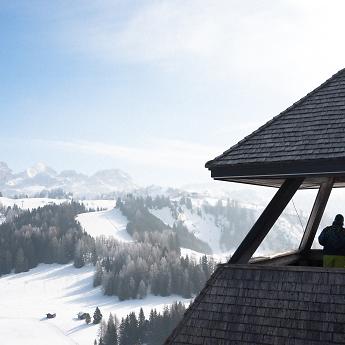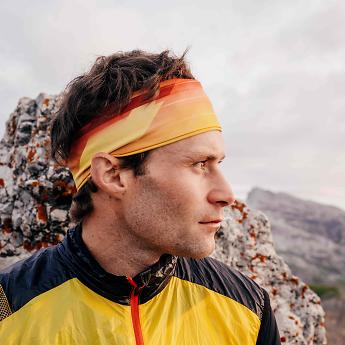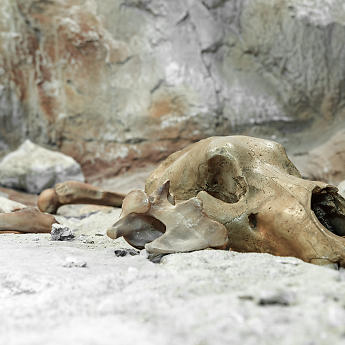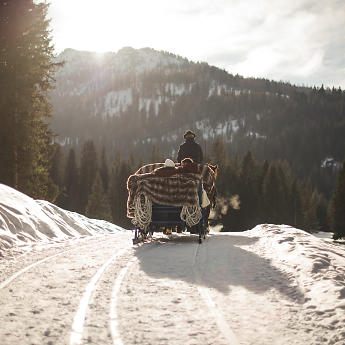
Hand to rock
The Vallon and Piz da Lech via ferratas
For the 38th time in his life, Manuel Agreiter opens the door to the mountain hut’s off-season emptiness. He slices into the room’s silence first with his right foot, the bottom of his shoe making its first contact in eight months with the cotto tiles. It is June, and with son Matteo and wife Cristina, the first ascent of the season has been made. There are metres of snow to excavate around the hut’s premises, helicopter deliveries to unload, and a complex system of water pipes to get into working order again. The days are numbered until the room will be flooded with hungry mountain enthusiasts, the air dancing with the scent of Cristina’s South Tyrolean soul food.
Whether born into these Dolomite mountains, transplants from afar, or with the luck to have been stunned by their beauty at some moment in our lives, few of us can say that we live and breathe these magnificent planetary reliefs with our entire being. Few of us that place the mountain on a pedestal next to the ones we hold closest to us, as Manuel Agreiter so lovingly does. His dedication to being an Alpine mountain guide is a way of life, and he weaves the threads of his affection for these mountains back and forth, day in and day out, across its landscape, bringing visitors through the complex tapestry of its fibres, reaching its highest peaks.
“...the view that surrounds us... these peaks, looking at these mountains, I'll never get tired of it. I've been up in this refuge for almost 40 years. And sometimes I'm up there in the evening, maybe having a little rest, having a beer or something (laughs to himself), I look at these mountains that I see all the time, and think how wonderous it is that they are always different. One day you see them covered in snow, one day there’s rain – this storm, that cloud, and when it opens up: a clear sky, sunrise, sunset, it’s changing all the time. Every moment you look at it is different. You have lucid, beautiful, perfect, extraordinary moments... you have moments that are perhaps a little more foggy – also very interesting... because when there is fog outside, some partial-peaks poke out, and it's so special. You appreciate every moment. When you know these things about the mountain, you never get bored of it.”
Manuel Agreiter, Alpine mountain guide and manager of the Franz Kostner mountain hut
The Franz Kostner hut sits at 2,550 meters above sea level, alone in a deserted high-altitude landscape atop South Tyrol’s coveted plateau-shaped massif, the Sella. The hut is conveniently positioned a short walk away from the kickoff point for the Vallon and Piz da Lech via ferratas. Here, accessibility is a luxury: those seeking out either of these two tours can take the Boè gondola from the car park in Corvara and then continue to the Vallon chairlift, whose top station is an easy walk to both the start of the via ferratas and the hut.
Via ferratas are high-mountain paths equipped with metal ropes and other traversing aids such as ladders, chains and bridges, whose combination requires visitors to employ a mix of hiking and climbing. It is one of the most intimate ways to experience the mountain; scaling its rugged walls, joining forces with the rock to keep yourself safely connected to its face. These World War I military-constructed pathways once served as an aid to troops as they moved through treacherous conditions at altitude. Today they have become a symbol of Alpine adventure and the updated infrastructures are regularly frequented by locals and tourists alike. All via ferratas require proper equipment: harness, helmet and ferrata kit, which is made up of lanyards, carabiners and a dissipator.
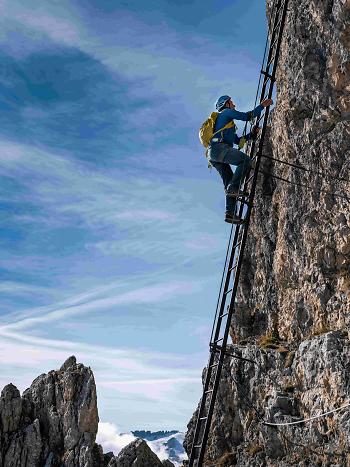
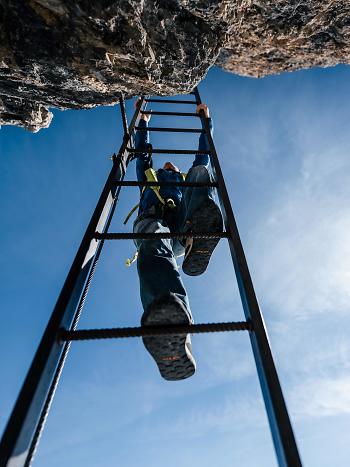
Us versus us
A day above the tree line, navigating what so many of us imagine to be the closest thing to the surface of the moon that we’ll have beneath our feet in this lifetime, is something that beyond a doubt changes us. The feeling of being as much at one with nature as we are at her mercy. Senses are heightened – perhaps it’s the adrenaline, perhaps the primal feeling of being completely aware of our body and mind, alone with them… such a sharp contrast from our daily, distracted lives far below. The mountain can be one of the loneliest places on this planet, for it is in them that we come face to face with ourselves and our own limits. Find ways to push past them, or not. Become filled, by no choice of our own, with a gratitude for the indisputable beauty that surrounds us. It is in the mountains that we can be truly free to be ourselves, in our most stripped-down form.
Ascending the via ferratas
Vallon
The Vallon via ferrata is a 250-meter ascent that was completely revamped in 2024 to create a state of the art mountain experience with maximised safety measures. Manuel describes the slightly more than one-hour ascent as “a great option for beginners and filled with particularities: a suspended section between two cords and interesting vertical passages”. After exiting the ferrata, there are two options. Many climbers head directly toward Sella’s highest peak, Piz Boè (3,152 m asl), which can be reached with another hour and a half of hiking. The trail is equipped with a metal cable, so no need to put the ferrata gear away, because it’s possible to clip on for the hike up to the top along the Strenta Crest. Alternatively, you can choose to ascend roughly 30 minutes towards the more solitary Sasso delle Nove peak and get a spectacular view of the backcountry skiing mecca of the Mezdì Valley. The climbing route located next to the via ferrata results in a lot of climbers directly descending down the ferrata path once they’ve finished their climb. That said, it is recommended to those who do the ferrata in ascent to take the longer route by foot back down the mountain.
Piz da Lech
With 370 meters of ascent, the Piz da Lech ferrata is slightly longer than Vallon’s. Recommended strictly in ascent only, the beauty of this route is that the moment you unclip yourself from the cable, you’re on a peak, unlike many other ferratas where you still have to walk a chunk of trail to reach a peak. The Piz da Lech peak earns you a 360-degree visual passport of the stunning high-profile Dolomite landmarks: Puez, Odle, Lavarella, Santa Croce, Val Gardena, Sasso Lungo… and so on. Many of the peaks in the region are equipped with an impressively massive cross, and Piz da Lech is no exception, so don’t forget to pay a visit to this monument once reaching the top.
Descending from the peak, climbers have one of two options. The first is to head back to Vallon, where you can take the chairlift down or visit the Franz Kostner hut. Otherwise, you can continue along the crest and head straight down into the valley to the village of Corvara. Whichever direction you choose, it’s best to leave ferrata gear on and attach yourself to the cables along the equipped path on your way down.
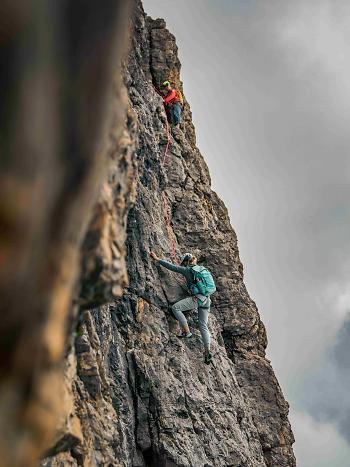
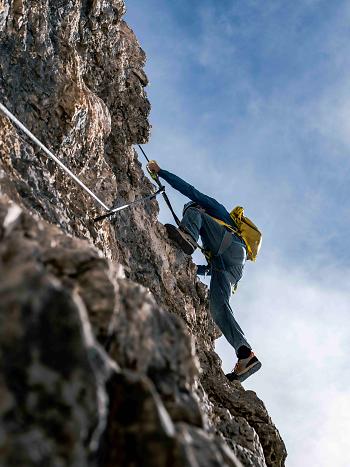
The mountain as a mother
Tucking one’s fingers into the rock, as reassuring as a mother’s embrace. We search for holds to cling to, feel the strength of fossilized coral reef or crystallized magma against our palms, resisting our fingertips; sharp edges weathered down and sculpted over millions of years, that now bear our weight as we ascend. This rock holds us, and we trust in its support, trust in our own steadfast grip. It is in this way that the mountain teaches us trust: in our surroundings and in ourselves. Maybe that’s why Manuel Agreiter proclaims his love for the mountain as akin to the love for his mother. The mountain nurtures us on our upward journey deeper into ourselves, all the while filled with a powerful force that it exerts now and then, keeping our egos at bay: a lesson in respect.
Vallon hospitality
Make no mistake about it: the Agreiter family is hosting you in their home when you enter the Franz Kostner mountain hut. You may need to step over Nila, the Golden Retriever and fourth family member, on your way in, who takes it upon herself to nap in whatever spot she sees fit at any given moment, which has been known to be directly in front of the main door. Take a seat and open up the encyclopaedia-sized menu filled with Matteo’s photography and mountain stories. Savour the moments in this hut, and soak up a little of that energy of a family who lives in, and for, the mountain.
A note on safety
“Being well-equipped in the mountain is fundamental”, remarks Manuel. No matter what sport you choose for a summer’s day in the mountain, lightweight clothing, good mountain shoes, and a day pack are a must. Day pack essential include: a warm jacket, mid-layer, waterproof jacket, change of clothes, hat, sunscreen, sunglasses, water and some energy-rich snacks. The mountain is a territory of uncertainty and extremes. For those with little experience, especially when venturing to a via ferrata, it is encouraged to hire a mountain guide to minimise risk and experience the mountain safely.
Locally based writer and enologist Amy Kadison, raised in Connecticut (USA), arrived in South Tyrol in 2016 for a thesis and stayed for the mountains. She has lived in six countries and earned two MScs in zoology and wine production.



































